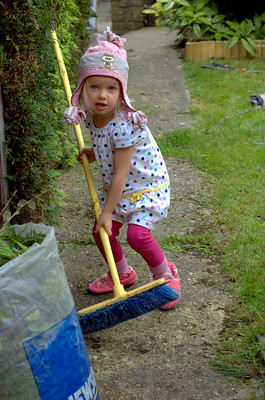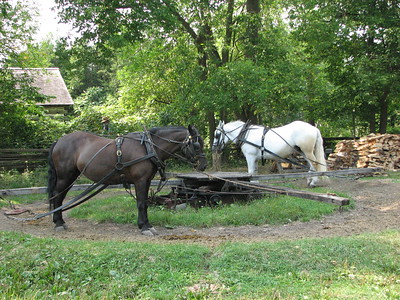Archive for August, 2022
The first step is to admit you have a problem.
 Nothing happens until the pain caused by a problem is greater than the pain of keeping things as they are.
Nothing happens until the pain caused by a problem is greater than the pain of keeping things as they are.
Problems aren’t bad for business. What’s bad for business is failing to acknowledge them.
The consternation that comes from the newly-acknowledged problem is the seed from which the solution grows.
There can be no solution until there’s a problem.
When the company doesn’t have a big problem, it has a bigger problem – complacency.
If you want to feel anxious about something, feel anxious that everything is going swimmingly.
Successful companies tolerate problems because they can.
Successful companies that tolerate their problems for too long become unsuccessful companies.
What happens to people in your company that talk about big problems? Are they celebrated, ignored, or ostracized? And what behavior does that reinforce? And how do you feel about that?
When everyone knows there’s a problem yet it goes unacknowledged, trust erodes.
And without trust, you don’t have much.
Helping helps.
 If you think asking for help is a sign of weakness, you won’t get the help you deserve.
If you think asking for help is a sign of weakness, you won’t get the help you deserve.
If the people around you think asking for help is a sign of weakness, find new people.
As a leader, asking others for help makes it easier for others to ask for help.
When someone asks you for help, help them.
If you’re down in the dumps, help someone.
Helping others is like helping yourself twice.
Helping is caring in action.
If you help someone because you want something in return, people recognize that for what it is.
Done right, helping makes both parties stand two inches taller.
Sometimes the right help gives people the time and space to work things out for themselves.
Sometimes the right help asks people to do work outside their comfort zone.
Sometimes the right help is a difficult conversation.
Sometimes the right help is a smile, a phone call, or a text.
And sometimes the right help isn’t recognized as help until six months after the fact.
Here’s a rule to live by – When in doubt, offer help.
“Helping Daddy” by audi_insperation is licensed under CC BY 2.0.
The Ins and Outs of Things
 When things are overwhelming to you but not to others, it’s okay to feel overwhelmed for a while.
When things are overwhelming to you but not to others, it’s okay to feel overwhelmed for a while.
When the seas are rough, you may think you are alone, but others may see it differently.
What’s worthy of your attention is defined by you, though some make it easy for you to think otherwise.
When you disagree with someone’s idea, that says nothing about them.
Judging someone from the outside is unfair, and it’s the same with judging yourself from the inside.
When everyone around you sees you differently than you see yourself, it’s worth looking critically at what you see that they don’t and what they see that you don’t.
You aren’t your thoughts and feelings, but it can feel like it in the heat of the moment.
Self-judgment is the strongest flavor of judgment.
“Object from the exhibition We call them Vikings produced by The Swedish History Museum” by The Swedish History Museum, Stockholm is licensed under CC BY 2.0.
The first step is to understand the system as it is.
 If there’s a recurring problem, take the time to make sure the system hasn’t changed since last time and make sure the context and environment are still the same. If everything is the same, and there are no people involved in the system, it’s a problem that resides in the clear domain. Here’s a link from Dave Snowden who talks about the various domains. In this video, Dave calls this domain the “simple” domain. Solve it like you did last time.
If there’s a recurring problem, take the time to make sure the system hasn’t changed since last time and make sure the context and environment are still the same. If everything is the same, and there are no people involved in the system, it’s a problem that resides in the clear domain. Here’s a link from Dave Snowden who talks about the various domains. In this video, Dave calls this domain the “simple” domain. Solve it like you did last time.
If there’s a new problem, take the time to understand the elements of the system that surround the problem. Define the elements and define how they interact, and define how they set the context and constraints for the problem. And then, define the problem itself. Define when it happens, what happens just before, and what happens after. If there are no people involved, if the solution is not immediately evident, if it’s a purely mechanical, electromechanical, chemical, thermal, software, or hardware, it’s a problem in the complicated domain (see Dave’s video above) and you’ll be able to solve it with the right experts and enough time.
If you want to know the next evolution of the system, how it will develop and evolve, the situation is more speculative and there’s no singular answer. Still, the first step is the same – take the time to understand the elements of the system and how they interact. Then, look back in time and learn the previous embodiments of the system and define its trajectory – how it evolved into its current state. If there has been consistent improvement along a singular line of goodness, it’s likely the system will want to continue to evolve in that direction. If the improvement has flattened, it’s likely the system will try to evolve along a different line of evolution.
I won’t go into the specifics of lines of evolution of technological systems, as it’s a big topic. But if you want to know more, here’s a nice description of evolution along the line of adaptability by my teacher, Victor Fey – The best products know how to adapt.
If there are people involved with the system, it’s a complex system (see Dave’s video). (There are complex systems that don’t involve people, but I find this a good way to talk about complex systems.) The first step is to define the system as it is, but because the interactions among the elements are not predictable, your only hope is to probe, sense, and respond by doing more of what works and less of what doesn’t. Thanks to Dave Snowden for that language.
The first step is always to understand the system as it is.
“Space – Antennae Galaxies” by Trodel is licensed under CC BY-SA 2.0.
Is your project too big, too small, or both?
 When choosing projects there are two competing questions: Is it big enough? And, is it small enough? The project must be big enough to generate the profits required by the company’s growth objectives. Larger growth objectives require larger projects. Yet the project has to be small enough to be completed within the time constraints defined by the growth objectives. Tighter time constraints require smaller projects.
When choosing projects there are two competing questions: Is it big enough? And, is it small enough? The project must be big enough to generate the profits required by the company’s growth objectives. Larger growth objectives require larger projects. Yet the project has to be small enough to be completed within the time constraints defined by the growth objectives. Tighter time constraints require smaller projects.
When the projected revenue generated by the candidate project is less than what’s needed to meet the growth objectives, the project is deemed “not big enough.” But what if the candidate project is the largest project that the project team can imagine? Does that say something about the project team’s imagination or the growth objectives? Open question: How do tell the difference between a project that is too small to meet the growth objectives and growth objectives that demand projects larger than the project team’s imagination?
When the projected launch date of the candidate project is later than the date of first revenue defined in the growth plan, the project plan is deemed “too long.” The team is then asked to sharpen their pencils and return with a launch date that meets the revenue timeline. And when the revised schedule also violates the revenue timeline, the project is deemed “too big.” Open question: How do you tell the difference between a project that is too big to meet the revenue timeline and a revenue timeline that is too stringent to allow a project of sufficient size?
Theoretically, there are candidate projects that are big enough to meet the growth objectives and small enough that their launch dates meet revenue timelines. But in practice, candidate projects are either too small to meet growth objectives or too large to meet revenue timelines. And, yes, I have seen candidate projects that are both too small and too large. But this says more about the growth objectives, revenue timelines, and the number of projects that run concurrently (too few resources spread over too many projects).
Growth objectives are good, and so are projects that fit with the team’s capabilities to deliver. Incremental revenue that comes sooner rather than later is good. And so are project timelines that are governed by the work content, resources applied to the projects, and good product development practices.
Truth is, we need it all – projects that deliver the sizzle that sells and projects that launch sooner rather than later. And year-on-year, we need to get better at delivering on all of it. And the best way I know to do all that is to ritualistically invest in the people that do the work and the tools they use.
“Horse Yin and Yang” by onecog2many is licensed under CC BY 2.0.
 Mike Shipulski
Mike Shipulski